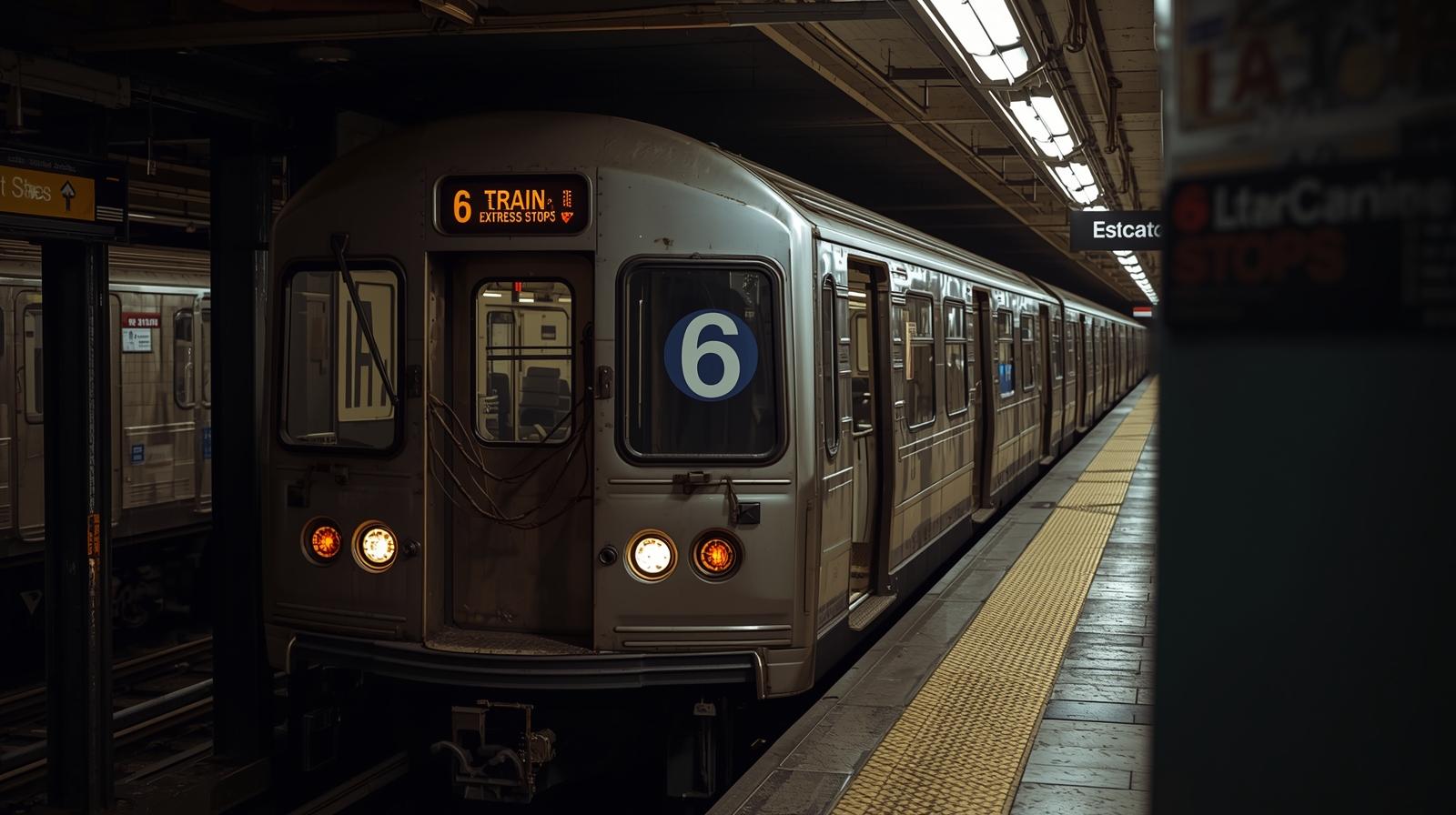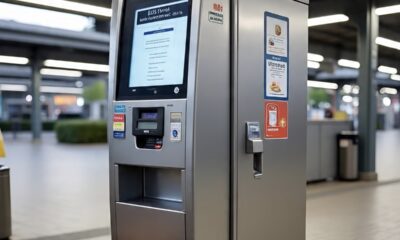Travel
6 Train Express Stops: A Complete Guide for New York City Commuters
Published
4 weeks agoon

The 6 train is one of the most widely used subway lines in New York City, connecting the Bronx, Manhattan, and the busy areas in between. Part of the Lexington Avenue Line, it plays a critical role in helping millions of New Yorkers and visitors move around the city every year. Known for its mix of local and express services, the 6 train ensures that riders can reach their destinations quickly and conveniently.
Unlike some subway lines that serve only one function, the 6 train provides both local and express service at different times of the day. This flexibility allows commuters to save time during rush hours while still maintaining reliable access to every stop along the route. For people who live in the Bronx and work in Manhattan, the 6 train is often the primary subway choice.
The express option is especially useful for riders traveling longer distances. Instead of stopping at every station, the express skips certain local stops, cutting down travel time and reducing congestion during busy periods. For this reason, the 6 train express is often viewed as a lifeline for commuters who need efficiency and speed.
The Role of Express Service in NYC Transit
Express trains are designed to move riders quickly across long stretches of the city. In New York City’s vast subway system, express service ensures that passengers traveling across boroughs do not waste time stopping at every single station. The 6 train express plays this role perfectly by connecting high-demand areas with fewer stops.
For example, a rider heading from the Bronx to Midtown Manhattan can save several minutes by using the 6 express instead of the local train. This time-saving benefit becomes even more valuable during morning and evening rush hours when trains are packed and the streets above are congested with traffic.
Express service also helps balance rider flow. Local stops handle neighborhood-level traffic, while express stops focus on major hubs with heavy passenger movement. Together, they form a system that keeps the city moving efficiently. The 6 express therefore serves as both a commuter’s friend and a pressure valve for the city’s busiest transit corridor.
6 Train Route Overview
The 6 train runs along the Lexington Avenue Line, stretching from Pelham Bay Park in the Bronx all the way down to Brooklyn Bridge–City Hall in Manhattan. Along the way, it passes through residential neighborhoods, commercial districts, and cultural landmarks.
The train is marked with a dark green circle on subway maps and is one of the most important north-south routes on the east side of Manhattan. While the west side of Manhattan has multiple subway options, the east side relies heavily on the Lexington Avenue line, making the 4, 5, and 6 trains essential to daily life.
The 6 train operates local service throughout the day but adds express service in Manhattan during rush hours. This dual system ensures that all riders—whether local residents or long-distance commuters—can rely on it.
6 Train Express Stops in Manhattan
When the 6 train runs express in Manhattan, it serves a set of major stations while skipping several smaller ones. These express stops are carefully chosen based on passenger demand, transfer options, and neighborhood importance.
Key express stops for the 6 train in Manhattan typically include:
- 125th Street (Harlem) – A major hub with transfers to other subway lines and buses.
- 86th Street (Upper East Side) – Serves one of the busiest residential and shopping areas.
- 59th Street / Lexington Avenue – Provides transfers to the N, R, W, and F trains.
- Grand Central–42nd Street – One of the most important transit hubs in the city.
- 14th Street–Union Square – A busy station with multiple subway connections.
- Brooklyn Bridge–City Hall – The downtown Manhattan terminal.
These stops cover the neighborhoods with the highest demand, ensuring that express service benefits the largest number of riders.
Bronx to Manhattan Connectivity
The Bronx relies heavily on the 6 train for access to Manhattan. With neighborhoods like Pelham Bay, Parkchester, and Hunts Point feeding into the line, the demand for quick and reliable service is extremely high.
The 6 express allows Bronx residents to reach Manhattan in less time, making it an essential option for commuters who work downtown. Students, workers, and tourists all benefit from the connection, as the 6 train links residential Bronx areas with some of Manhattan’s most important cultural and business districts.
Because the 6 train shares its route with the 4 and 5 express lines at certain points, Bronx residents often have multiple options. Still, the 6 express remains one of the most popular choices due to its consistency and coverage.
Transfers and Connections Along the Route
One of the strengths of the 6 train express is the number of transfer points it offers. Major express stops connect riders to multiple subway lines, allowing them to travel across the city with ease.
- 125th Street connects to multiple bus routes in Harlem.
- 59th Street / Lexington Avenue links with the N, R, W, and F trains, providing cross-town options.
- Grand Central–42nd Street is the ultimate transfer hub, offering access to the 7 train, shuttle to Times Square, and Metro-North trains.
- 14th Street–Union Square connects to the L, N, Q, R, and W trains, making downtown travel convenient.
These connections highlight the importance of express stops not just for speed, but also for access to the rest of the subway system.
Benefits of Taking the 6 Train Express
The advantages of using the 6 train express are clear for regular commuters:
- Time Savings – Skipping multiple local stops means faster travel, especially during peak hours.
- Comfort – Although trains can be crowded, spending less time on board makes the ride more manageable.
- Direct Access to Hubs – Express stops are located at key points where riders can transfer or reach popular destinations.
- Reliability – The express system balances out traffic between local and express trains, reducing delays.
For riders who need to travel quickly from the Bronx to Manhattan, these benefits are invaluable.
Challenges of the 6 Train Express
Despite its usefulness, the 6 express also comes with challenges. One issue is overcrowding during rush hours, when trains are filled to capacity. Even with express service, many riders experience delays simply because of the sheer number of passengers.
Another challenge is that riders who live near local stops may find the express less convenient. They either have to backtrack to an express stop or rely on slower local service.
Finally, maintenance work can sometimes affect express schedules, leading to temporary service changes. Despite these drawbacks, most commuters still consider the 6 express a vital part of their daily routines.
Commuter Experiences and Reviews
Many commuters appreciate the efficiency of the 6 express, especially those who travel daily between the Bronx and Manhattan. Riders often note that the train saves them valuable time compared to local service.
However, reviews also highlight the crowded conditions. Standing-room-only trips are common during morning and evening rush hours. Still, commuters generally view the express option as a necessary solution in a busy city like New York.
For occasional riders or tourists, the 6 express offers a chance to reach major destinations quickly without getting overwhelmed by too many stops.
Future of Express Service on the 6 Train
The future of the 6 train express is tied to New York City’s ongoing transportation planning. As the city grows, the need for faster, more reliable transit options continues to rise. Expansions like the Second Avenue Subway may eventually ease pressure on the Lexington Avenue Line, including the 6 train.
Upgrades in technology, such as communication-based train control (CBTC), may also improve efficiency, allowing trains to run more frequently. If these changes come into effect, the 6 express will likely become even more valuable to commuters.
Key Takeaways
The 6 train express stops are vital for connecting the Bronx and Manhattan, providing riders with faster travel and better access to key hubs. By focusing on major stations like 125th Street, 86th Street, and Grand Central, the express service ensures that commuters save time while still enjoying strong connectivity.
Though crowded at times, the express remains one of the most reliable and efficient ways to navigate New York City. Its importance to daily life cannot be overstated, making it a lifeline for countless riders.
FAQ
Q1: When does the 6 train run express?
It usually operates express service in Manhattan during weekday rush hours.
Q2: What are the main express stops?
Stops include 125th Street, 86th Street, 59th Street, Grand Central–42nd Street, Union Square, and Brooklyn Bridge.
Q3: Is the 6 train express faster than the 4 or 5?
Yes, but its route is slightly different; the 4 and 5 also serve express riders on the same corridor.

A Start-Up with Patient Medical Stories

2 Story 2 Car Garage

100 Orange Juice Skip Opening Story

The Transformative Power of Technology in the Modern World

2 Year Mother’s Day Clothes: Adorable Styles to Celebrate the Day in Comfort and Joy

14th Century Clothing: A Detailed Look at Medieval Fashion and Style

Money Storm Slot Game: Where Every Spin Brings the Thrill of Fortune

Triple Double Diamond Free Games Slots: Classic Casino Fun with Big Wins

Best Running Trainers for Shin Splints: Find Comfort, Support, and Relief

Best Hair Products for Shine: Get That Healthy, Glossy Look Naturally

101 Warren Street New York City: Luxury Living in Tribeca

4 Seasons Nail Salon: A Place for Beauty, Relaxation, and Self-Care

10 Provost St Jersey City: A Complete Guide to Modern Living

2222 Jackson Ave Long Island City: A Modern Living Destination

6 Train Express Stops: A Complete Guide for New York City Commuters

Can You Get a Doctor’s Note Without Being Seen? A Complete Guide

Bella Donna Hair Salon: A Blend of Style, Elegance, and Care

Align Doctor Login Everything You Need to Know in Simple Words

Cutting Hair Style A Complete Guide to Modern Trends, Techniques, and Ideas

1920s Paris Business Women: The Bold Voices That Redefined Feminine Power

A Start-Up with Patient Medical Stories

2 Story 2 Car Garage

100 Orange Juice Skip Opening Story

The Transformative Power of Technology in the Modern World

2 Year Mother’s Day Clothes: Adorable Styles to Celebrate the Day in Comfort and Joy

14th Century Clothing: A Detailed Look at Medieval Fashion and Style

Money Storm Slot Game: Where Every Spin Brings the Thrill of Fortune

Triple Double Diamond Free Games Slots: Classic Casino Fun with Big Wins

Best Running Trainers for Shin Splints: Find Comfort, Support, and Relief









